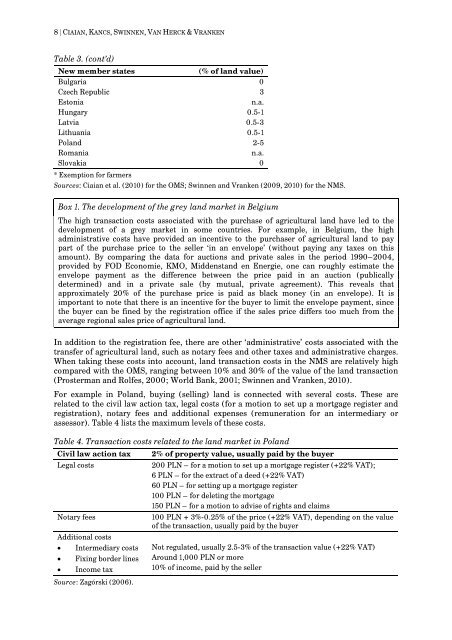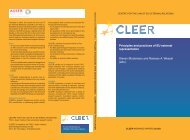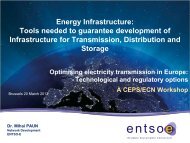Institutional Factors Affecting Agricultural Land Markets
Institutional Factors Affecting Agricultural Land Markets
Institutional Factors Affecting Agricultural Land Markets
You also want an ePaper? Increase the reach of your titles
YUMPU automatically turns print PDFs into web optimized ePapers that Google loves.
8 | CIAIAN, KANCS, SWINNEN, VAN HERCK & VRANKEN<br />
Table 3. (cont’d)<br />
New member states<br />
(% of land value)<br />
Bulgaria 0<br />
Czech Republic 3<br />
Estonia<br />
n.a.<br />
Hungary 0.5-1<br />
Latvia 0.5-3<br />
Lithuania 0.5-1<br />
Poland 2-5<br />
Romania<br />
n.a.<br />
Slovakia 0<br />
* Exemption for farmers<br />
Sources: Ciaian et al. (2010) for the OMS; Swinnen and Vranken (2009, 2010) for the NMS.<br />
Box 1. The development of the grey land market in Belgium<br />
The high transaction costs associated with the purchase of agricultural land have led to the<br />
development of a grey market in some countries. For example, in Belgium, the high<br />
administrative costs have provided an incentive to the purchaser of agricultural land to pay<br />
part of the purchase price to the seller ‘in an envelope’ (without paying any taxes on this<br />
amount). By comparing the data for auctions and private sales in the period 1990–2004,<br />
provided by FOD Economie, KMO, Middenstand en Energie, one can roughly estimate the<br />
envelope payment as the difference between the price paid in an auction (publically<br />
determined) and in a private sale (by mutual, private agreement). This reveals that<br />
approximately 20% of the purchase price is paid as black money (in an envelope). It is<br />
important to note that there is an incentive for the buyer to limit the envelope payment, since<br />
the buyer can be fined by the registration office if the sales price differs too much from the<br />
average regional sales price of agricultural land.<br />
In addition to the registration fee, there are other ‘administrative’ costs associated with the<br />
transfer of agricultural land, such as notary fees and other taxes and administrative charges.<br />
When taking these costs into account, land transaction costs in the NMS are relatively high<br />
compared with the OMS, ranging between 10% and 30% of the value of the land transaction<br />
(Prosterman and Rolfes, 2000; World Bank, 2001; Swinnen and Vranken, 2010).<br />
For example in Poland, buying (selling) land is connected with several costs. These are<br />
related to the civil law action tax, legal costs (for a motion to set up a mortgage register and<br />
registration), notary fees and additional expenses (remuneration for an intermediary or<br />
assessor). Table 4 lists the maximum levels of these costs.<br />
Table 4. Transaction costs related to the land market in Poland<br />
Civil law action tax<br />
Legal costs<br />
Notary fees<br />
Additional costs<br />
• Intermediary costs<br />
• Fixing border lines<br />
• Income tax<br />
Source: Zagórski (2006).<br />
2% of property value, usually paid by the buyer<br />
200 PLN – for a motion to set up a mortgage register (+22% VAT);<br />
6 PLN – for the extract of a deed (+22% VAT)<br />
60 PLN – for setting up a mortgage register<br />
100 PLN – for deleting the mortgage<br />
150 PLN – for a motion to advise of rights and claims<br />
100 PLN + 3%-0.25% of the price (+22% VAT), depending on the value<br />
of the transaction, usually paid by the buyer<br />
Not regulated, usually 2.5-3% of the transaction value (+22% VAT)<br />
Around 1,000 PLN or more<br />
10% of income, paid by the seller








